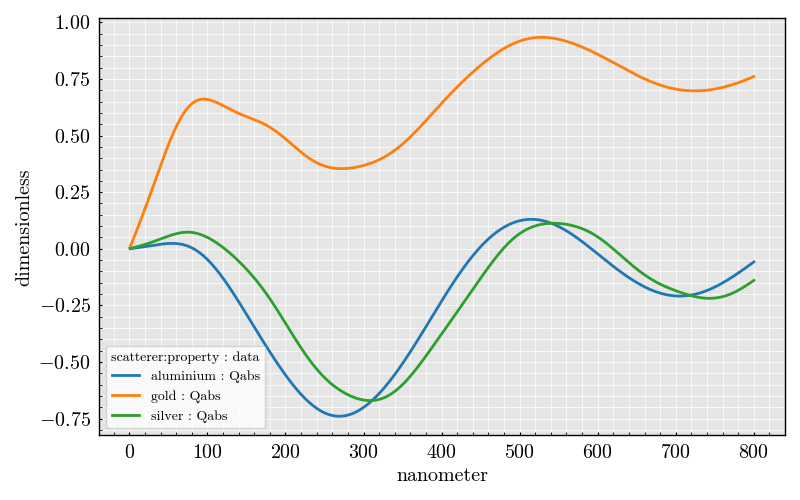Note
Go to the end to download the full example code.
Cylinder: Qabs vs Diameter#
This example demonstrates how to compute and visualize the scattering efficiency (Qsca) as a function of diameter for cylindrical scatterers using PyMieSim.
Importing the package dependencies: numpy, PyMieSim
import numpy as np
from TypedUnit import ureg
from PyMieSim.experiment.scatterer import Cylinder
from PyMieSim.experiment.source import Gaussian
from PyMieSim.experiment import Setup
from PyOptik import Material
source = Gaussian(
wavelength=400 * ureg.nanometer, # 400 nm
polarization=0 * ureg.degree, # Linear polarization angle in radians
optical_power=1e-3 * ureg.watt, # 1 milliureg.watt
NA=0.2 * ureg.AU, # Numerical Aperture
)
scatterer = Cylinder(
diameter=np.linspace(1, 800, 300)
* ureg.nanometer, # Diameters ranging from 1 nm to 800 nm
property=[
Material.silver,
Material.gold,
Material.aluminium,
], # Scatterer materials
medium_property=1 * ureg.RIU, # Refractive index of the surrounding medium
source=source,
)
experiment = Setup(scatterer=scatterer, source=source)
dataframe = experiment.get(
"Qabs"
) # Assuming Qabs was intended, replace with measure.Qsca if needed
dataframe.plot(x="scatterer:diameter")

<Figure size 800x500 with 1 Axes>
Total running time of the script: (0 minutes 0.345 seconds)
